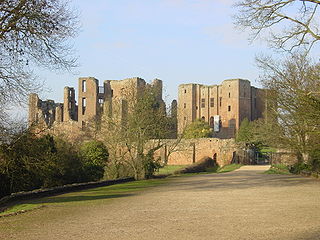
Kenilworth Castle is a castle in the town of Kenilworth in Warwickshire, England which was founded during the Norman conquest of England; with development through to the Tudor period. It has been described by the architectural historian Anthony Emery as "the finest surviving example of a semi-royal palace of the later middle ages, significant for its scale, form and quality of workmanship". Kenilworth played an important historical role: it was the subject of the six-month-long siege of Kenilworth in 1266, thought to be the longest siege in Medieval English history, and formed a base for Lancastrian operations in the Wars of the Roses. Kenilworth was the scene of the removal of Edward II from the English throne, the perceived French insult to Henry V in 1414 of a gift of tennis balls, and the Earl of Leicester's lavish reception of Elizabeth I in 1575. It has been described as "one of two major castles in Britain which may be classified as water-castles or lake-fortresses...".
The Battle of Evesham was one of the two main battles of 13th century England's Second Barons' War. It marked the defeat of Simon de Montfort, Earl of Leicester, and the rebellious barons by the future King Edward I, who led the forces of his father, King Henry III. It took place on 4 August 1265, near the town of Evesham, Worcestershire.

Bewdley is a town and civil parish in the Wyre Forest District in Worcestershire, England on the banks of the River Severn. It is in the Severn Valley 3 miles (4.8 km) west of Kidderminster and 22 miles (35 km) southwest of Birmingham. It lies on the River Severn, at the gateway of the Wyre Forest national nature reserve, and at the time of the 2011 census had a population of 9,470. Bewdley is a popular tourist destination and is known for the Bewdley Bridge, designed by Thomas Telford.
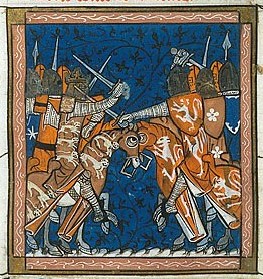
The Second Barons' War (1264–1267) was a civil war in England between the forces of a number of barons led by Simon de Montfort against the royalist forces of King Henry III, led initially by the king himself and later by his son, the future King Edward I. The barons sought to force the king to rule with a council of barons rather than through his favourites. The war also featured a series of massacres of Jews by de Montfort's supporters including his sons Henry and Simon, in attacks aimed at seizing and destroying evidence of baronial debts. To bolster the initial success of his baronial regime, de Montfort sought to broaden the social foundations of parliament by extending the franchise to the commons for the first time. However, after a rule of just over a year, de Montfort was killed by forces loyal to the king in the Battle of Evesham.

The area now known as Worcestershire has had human presence for over half a million years. Interrupted by two ice ages, Worcestershire has had continuous settlement since roughly 10,000 years ago. In the Iron Age, the area was dominated by a series of hill forts, and the beginnings of industrial activity including pottery and salt mining can be found. It seems to have been relatively unimportant during the Roman era, with the exception of the salt workings.

Samuel Colman was an American painter, interior designer, and writer, probably best remembered for his paintings of the Hudson River.

St Mary's Church, Handsworth, also known as Handsworth Old Church, is a Grade II* listed Anglican church in Handsworth, Birmingham, England. Its ten-acre (4 hectare) grounds are contiguous with Handsworth Park. It lies just off the Birmingham Outer Circle, and south of a cutting housing the site of the former Handsworth Wood railway station. It is noteworthy as the resting place of famous progenitors of the industrial age, and has been described as "the cathedral of the Industrial Revolution".
Henry Brittan Willis was an English landscape and animal painter.
Joseph Barber was an English landscape painter and art teacher, and an early member of the Birmingham School of landscape painters.
George Feather Lawrence (1901–1981) was born in Sydney, Australia and for many years was regarded as one of the foremost painters in the impressionist style. He studied under Julian Rossi Ashton at the famous Sydney Art School in the old Queen Victoria Building; and later in London and Paris.
James Priddey, RBSA, PPRBSA, FRSA, was an English painter, printmaker, illustrator and member of the Royal Birmingham Society of Artists.
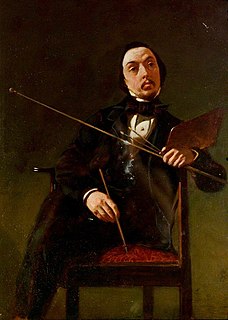
Edmund John Niemann (1813–1876) was a prolific and highly successful British landscape artist working mostly in oils. Nine of his paintings are held in the Wolverhampton Art Gallery.
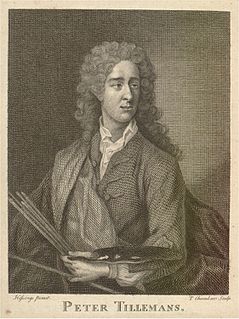
Peter Tillemans was a Flemish painter, best known for his works on sporting and topographical subjects. Alongside John Wootton and James Seymour, he was one of the founders of the English school of sporting painting.

Worcestershire was the county where the first battle and last battle of the English Civil War took place. The first battle, the Battle of Powick Bridge, fought on 23 September 1642, was a cavalry skirmish and a victory for the Royalists (Cavaliers). The final battle, the battle of Worcester, fought on 3 September 1651, was decisive and ended the war with a Parliamentary (Roundhead) victory and King Charles II a wanted fugitive.
David Haughton (1924–1991) was a British artist associated with the St Ives movement. Many of his paintings, etchings and drawings feature aspects of the Cornish landscape, particularly the area around St Just.

Bewdley Museum is a museum in the town of Bewdley in Worcestershire, England. It is managed by the Wyre Forest District Council.

Henry Bates Joel (1875–1922) was a British landscape painter of the late Victorian era. Joel exhibited from 1880 to 1905 and primarily painted coastal scenes and landscapes.

Evesham Town Hall is a municipal structure in the Market Place in Evesham, Worcestershire, England. The town hall, which was the headquarters of Evesham Borough Council, is a Grade II listed building.
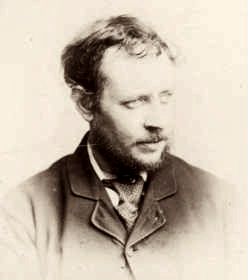
Bernard Walter Evans was a British landscape painter and watercolourist in the Romantic style, working mainly in Birmingham, Wales, London, Cannes and the North Riding of Yorkshire. Because he used a "heavy, cumbrous" horse-drawn van to reach remote sites in Yorkshire, his nickname there was Van Evans, and he was recognisable with his wideawake hat, pipe and neckerchief. He was known for his arduous days of painting in the hard Yorkshire winters, with frozen water pots, little food, and only a paraffin stove to warm his hands.















